A few facts about life in Ancient Rome, which was not in the history books
Categories: History
By Pictolic https://pictolic.com/article/a-few-facts-about-life-in-ancient-rome-which-was-not-in-the-history-books.htmlWe all studied in school history of Ancient Rome and watched a lot of historical films about Caesar and the gladiators. But this does not mean that we can count on the experts one of the greatest empires in the history of mankind. Scientists still make interesting discoveries about Rome and the Romans, who surprise us and even shocking.
We want to tell you some interesting facts that were not discussed in textbooks and Hollywood blockbusters.
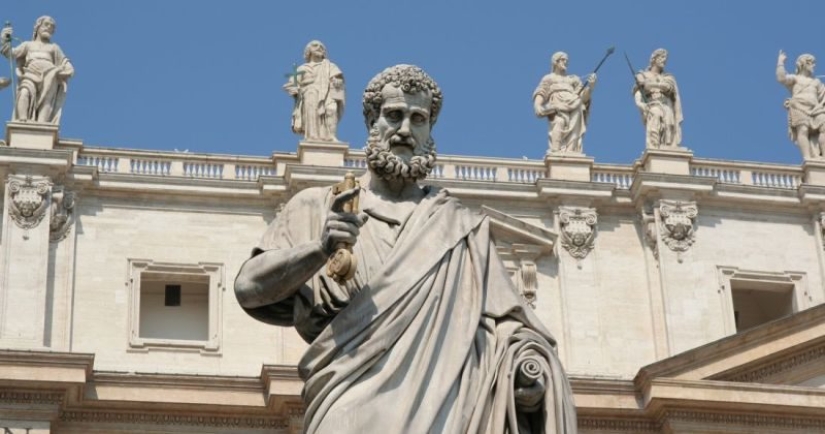
It may seem strange today, but in Rome there was no elite areas and the palaces and mansions of the senators stood next to multi-storey insulin poor. The house in which lived the poor citizens usually belonged to the Roman aristocracy and those who had good profits from their rent.
Passive income was the Romans at a premium, but the physical labor was considered humiliating. About the welfare of a resident of the city was judged by his house, or rather, on it's roof. The more it was shingles, the richer was the owner. In the city and said — "he has a house at 10 thousand tiles".
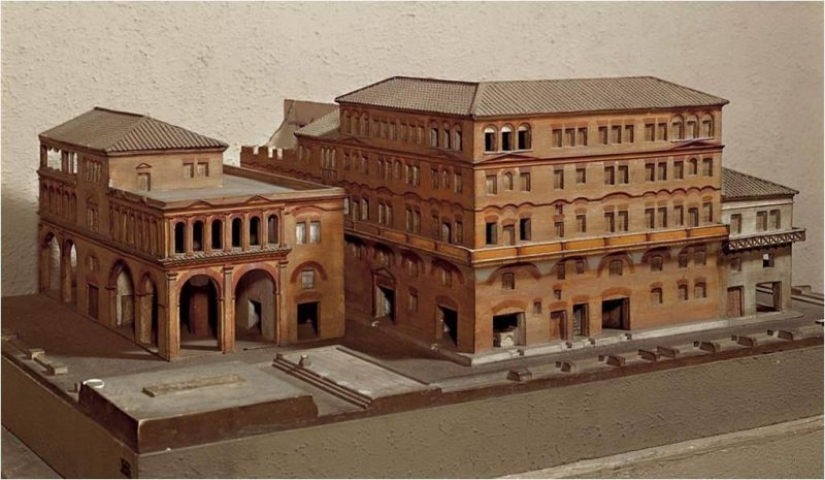
It looked like the house of a noble Roman (left) and Insula for the poor
To calculate the number of roofing materials on the Imperial palaces was difficult. Roman rulers were built with unprecedented scale and their mansions even by today's standards would be considered beautiful. For example, Nero built a Palace, a fully occupied the Palatine hill.
Legend has it that the Palace, decorated with gold, and decorated with the 36-metre statue of Nero. This complex is still one of the largest palaces in Europe. Unfortunately, we know about it only on descriptions of historians to the present day Grand residence is not preserved.
Loved to build big and one of the forerunners of Nero — the Emperor Caligula. His Palace has remained a bit of information, but one of his contemporaries wrote that the temple of castor and Pollux on the Forum was looking around him as a modest extension.
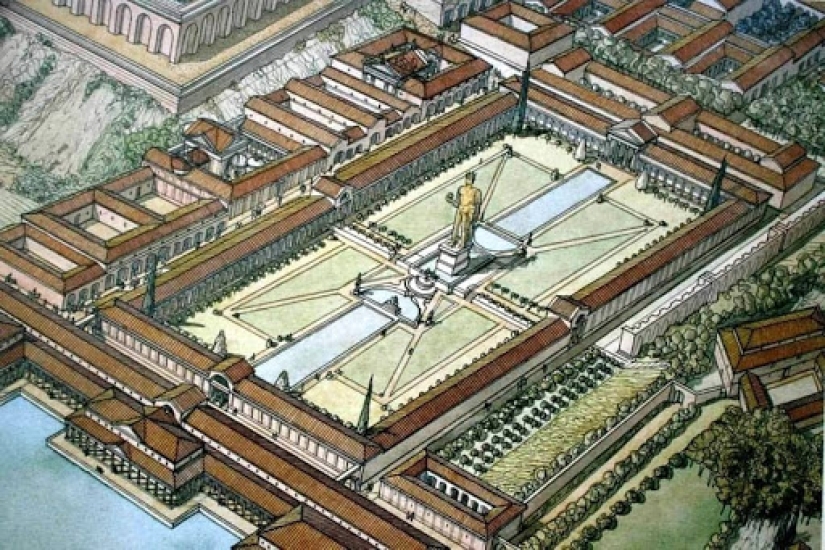
The Golden Palace of Nero was
Living on the same street of the nobility and the commoners had many disadvantages. Insulin regularly produced sewage that spilled out of the doors and Windows right on the street. There, among the buildings stood tanks in which the inhabitants have gathered the necessary Laundry urine.
This was combined with the people, who are on foot, horseback and by wagon from early morning until late at night cruised the stone bridge. Among the passers-by were a lot of drunks who were screaming and fighting, do not hesitate to others. Imagine that amid all the noise and chaos stood luxury homes the most noble and wealthy Romans.
For a break from the bustle of the city the rich used a country Villa. Rome annually flooded during the flood of the Tiber, which spared neither home patrician nor insulin poor. When the expected disaster, know left the city and took over the city, surrounded by gardens and olive groves.
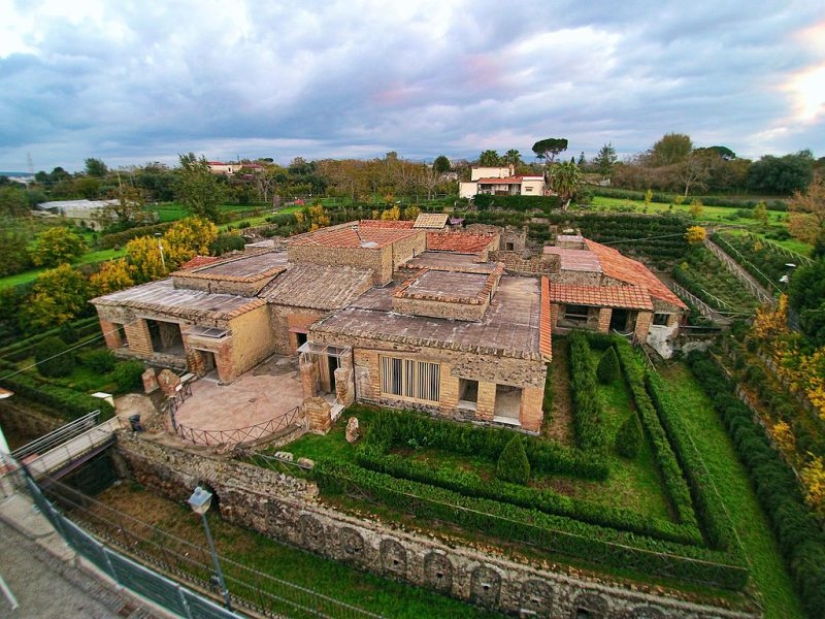
Villa of the Mysteries in Pompeii
Residents of the Insula fully enjoyed fetid flood, which was recorded in their home sewage from the streets and squares. Despite this inconvenience, housing on the ground floors of these houses were valued higher as it was more spacious and comfortable.
An important feature of the welfare of the inhabitants of Rome were the kitchen facilities for cooking could afford a few. The poor, as a rule, did not cook at home, and ate in taverns and on the streets, right outside sellers-hawkers.
Apart from the majestic ruins of the Colosseum and other architectural monuments, Ancient Rome left to posterity another monument, a few questionable. Testaccio hill, which translates as "Mountain of shards" is a pile of clay fragments with a height of 50 metres, which was formed about the middle of the II century ad
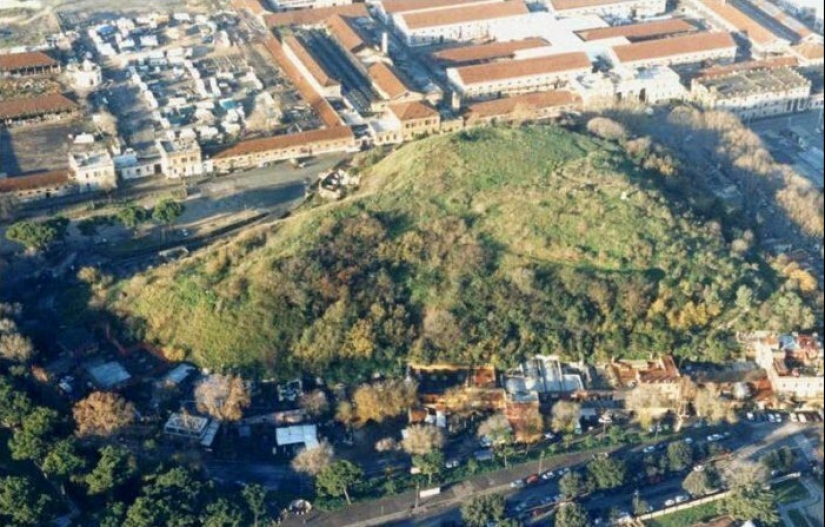
Hill Testaccio
Relying on historical sources, scientists estimate that every year the Romans used about 20 million liters of olive oil, which were delivered to the capital of the Empire from Spain. Drove the oil in a 100-liter clay jars, which can be used only once.
Clay wall jugs absorbed oil that then "grow old" and gave a new distinct flavor. Because of this desolate vessels are no longer used, and thrown in a certain place. Over time, dump the shards turned into a hill, which is now shown to tourists as a tourist attraction.
With all the rulers and all the external enemies of the Romans was always one constant mortal enemy of the epidemic. A city that is continuously replenished by the inhabitants of the provinces, sometimes dying in the full sense of the word. A major cause of disease was unsanitary conditions that prevailed in the ancient metropolis.
Especially given under these conditions children. In Ancient Rome had an impressive child mortality, and "bony" spared neither children from poor families or offspring of the emperors. For this reason, not every Governor was a direct heir — children often adopt, to have someone to hand over power.
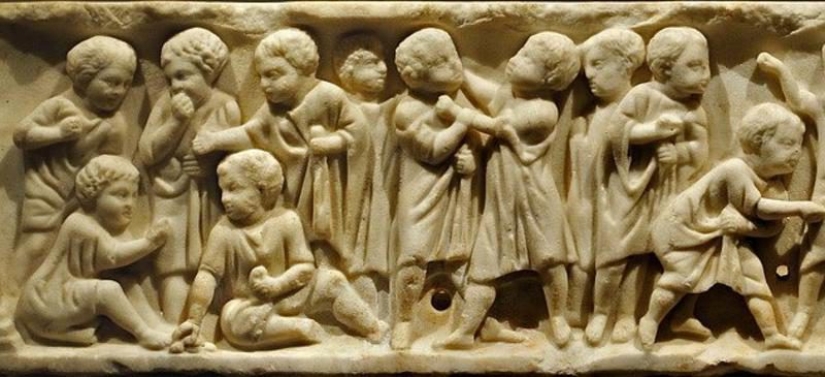
The practice of adoption in Rome had its own nuances. To take babies or 5-10-year-olds did not make sense, since the risk that they will die, was quite high. Most favored teenagers or even young men, and in special cases, adult men.
Despite the infant mortality rate, the kids were small value — the unwanted or with disabilities children were thrown in a special place called "dump". In this place I could come any resident of the city, and if you're lucky, find yourself a relatively healthy boy or girl. Taken from "children of the dump" not only adoption, but in order to grow his slave.
The young slave was immediately puzzled and bored he's never had. Child labour in Ancient Rome was quite commonplace and no restrictions did not exist. Archaeologists have discovered in Spain the grave four year old boy on the tombstone which was carved an image of the child-miner. That's all you need to know about the rights of the child in the Roman Empire.
The gestation and birth of a child in Rome was a serious problem. Cases where childbirth was dying baby, mother or both, used to happen quite often. The oldest surgical operation — caesarean section did not have the slightest relationship to the rescue of pregnant woman or child. According to the laws of 12 tables pregnant or died in childbirth a woman could not be buried with the fruit, so before burial caesarean section.
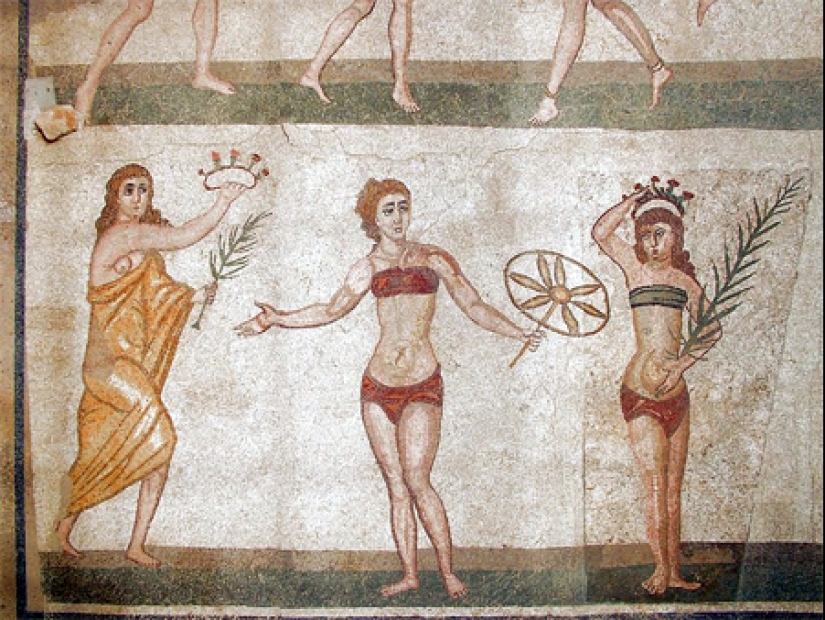
Roman women had more freedom than Greek. Roman, unlike Greek women could eat with the men. From the depths of centuries we have heard the story about how the Romans were invited to Greek to lunch and wished to see at the table, his daughter. The owner refused, and since then the conflict has cost the life of his servant and serious injuries to him.
But don't take it that in Ancient Rome reigned equality. Husband in law had the right to kill his wife, if convicted her of infidelity. Marriage, as such, the Romans were unfamiliar. To be considered husband and wife, it was enough just to cohabit.
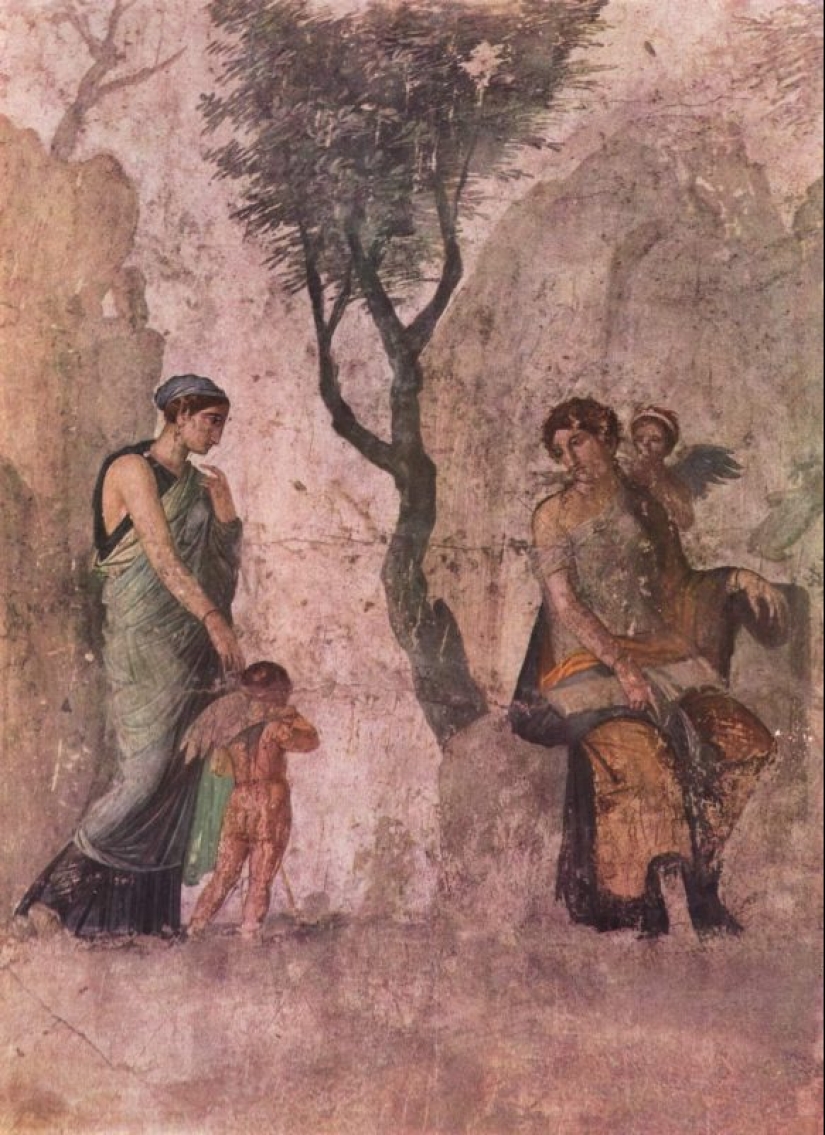
Women had the right to conduct real estate transactions, but only after the birth of a number of children. The noble lady had the right to it after the birth of three, and a commoner — four citizens of Rome. Before that, all transactions were made with the approval of her husband or other men appointed guardian.
In Ancient Rome had many slaves, but they were divided into several groups, which in society was different. A slave could capture in a distant country during the military campaign and to involve the Emperor. After a time, this slave had all the chances to make a career, to become a Freedman, and even to get rich.
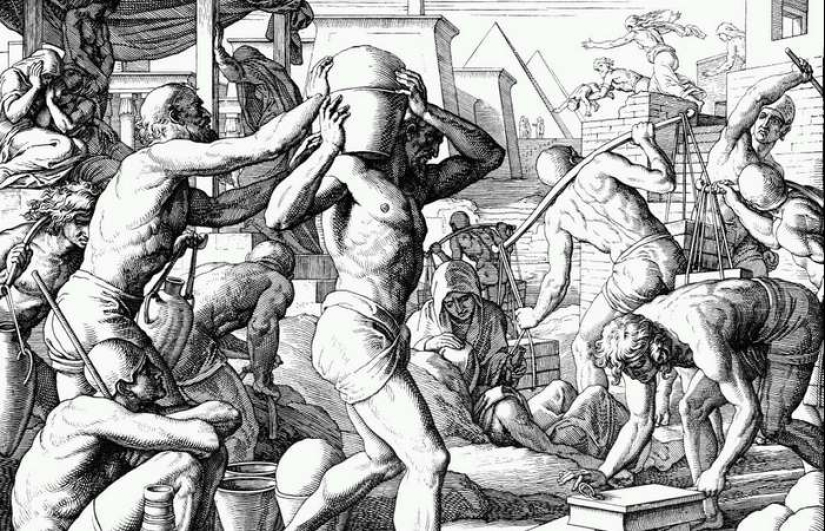
Also a slave could be born to women slaves and spend their entire lives working in the field or at the mine. When the servant has ceased to be the owner's benefit, it is often released. Old, injured or sick slaves were brought to their owners the only costs, so they let.
For most infirm slaves to be on the street meant misery and death, so they tried to stay with his master. Sometimes useless slaves were left as "teachers", that is, people looking out for children and accompanying them to school. Such a post in the homes of the wealthy came first, the Greeks, but it soon borrowed by the Romans.
It is known that the conspirators killed Caesar had no direct heirs, and the government passed the adopted shortly before his death grandnephew Octavian Augustus. The conspirators feared that Caesar turned the Republic into the Empire, and, ironically, happened exactly what they feared. August went down in history as the founder of the Roman Empire.
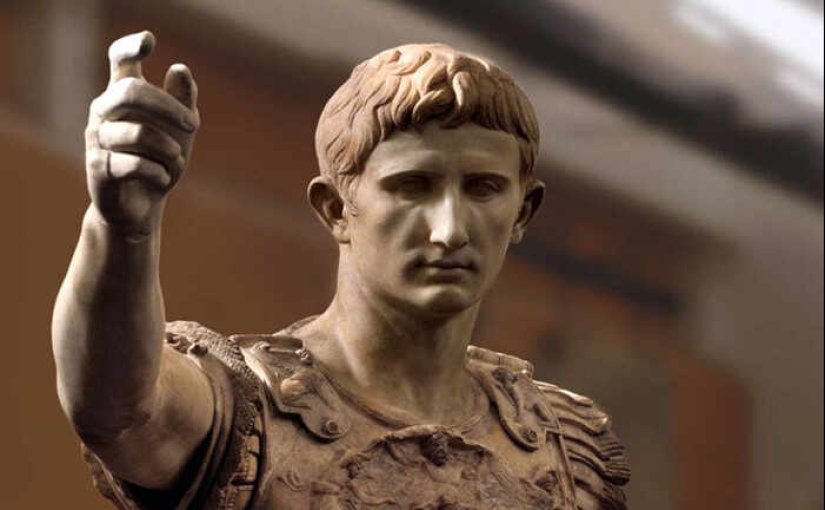
Augustus
Augustus immediately after obtaining power was very active. First he sat in the Senate of his men, taking the necessary decisions to him, he began to support sculptors and poets, glorifying him, and ensured the people "bread and circuses" to keep people from asking questions.
August was able to buy not only the Senate, but also the military. He undertook major reforms, having full authority over the army. Before each General self-recruited soldiers and officers, appointed them life and salary. Thanks to this, the commander being able to seize power from his unit in the history of Rome happened more than once.
The Emperor conquered the army of the state, appointing the soldiers impressive pension payments from the Treasury. Very soon it became clear that money to provide a huge number of military pensioners, the Emperor is not enough. So I had to increase the service life of the army from 16 to 20 years, and retired pay allotments, which were no good for anything.
Keywords: Italy | Army | History | Palace | Emperor antique | Soldiers | Power | Slavery | The Mediterranean | Villa | Ancient world | Longreads
Post News ArticleRecent articles

For many of us, going to the dentist is a nightmare experience. And this despite anesthesia and other modern technologies. It is ...

Talented photographer and retoucher Daria Klepikova lives and works in Moscow. Daria specializes in portrait photography and travel ...
Related articles

Nikolai Vasilyevich Gogol is not just a classic, but the first major Russian prose writer, who was considered his teacher by many ...

Here you are only 5 years old. Kindergarten. It's already 15. First love. Until recently, you graduated from the institute, and ...

While the Red Army used the "front-line hundred grams", methamphetamines were used on the other side of the trenches. Under the ...

Sometimes even great talent is forgotten. This is precisely the situation faced by the wonderful French artist Jean-Léon Gérôme, ...